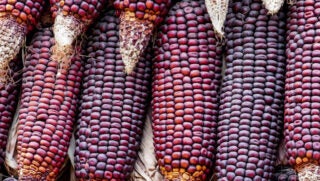It’s that time of year again where farmers are scouting their corn crop and, of course, posting photos on social media to show off their big ears. But on our farm, 2016 has been one of those years where everything just seems to go wrong.
Naturally, it started even before planting could get underway. It was a wet, wet spring. Our fields were flooded. We had a hard time working up the soil and were delayed in doing any pre-planting spraying. When it came to actual planting, we started weeks late. We barely got the corn crop in the ground before the insurance cutoff date.
Then, the growing season got underway, and the bad luck continued. We completely dried out. “If this batch of rain misses us, then the corn is definitely dead,” became somewhat of a motto in our house. Sadly, the rain nearly always missed us — almost like Mother Nature was doing it on purpose. We went weeks without any precipitation. When the rain did finally come, it tried to make up for the previous weeks by flooding us out. But it was too late.
With all the adverse weather conditions, our corn yields have taken a huge hit. When scouting fields, we find ears that are half filled out or dwarfed. We’ve had to forego the social media bragging because there definitely won’t be a bumper crop come fall.
But thanks to crop insurance, one bad season doesn’t (necessarily) mean our farm is going to go under.
The United States has a robust federal crop insurance program that is a unique mix of government and private enterprise. Oversight of the program is accomplished through the Risk Management Agency of the USDA. Private companies contract with the RMA to participate in the crop insurance program. The agency sets the rates that can be charged, determines eligibility criteria, and also underwrites some of the loss. It also helps farmers by paying a portion of the premiums and pays the insurance companies for some of their overhead costs.
In return, the federal government does obtain a portion of their underwriting gains in years where there are not as many claims. According to Crop Insurance America, the federal government saw $3.99 billion in crop insurance gains for the years 2001 to 2010. However, it also saw losses, which offset those gains, in 2011 and 2012. Nonetheless, unlike other support programs, crop insurance has the potential to pay the government back for the investment it makes into the system.
On the flip side, there are 17 private companies that actually administer the crop insurance program. The companies are required to sell crop insurance to any farmer who requests it and meets the eligibility requirements. Therefore, the insurance is broadly available. The downside for the companies is obviously that this increases the risk they take on, which is one of the main reasons the federal government is involved in the program at all.
Mixed into the crop insurance structure are various conservation practices. If farmers are going to purchase crop insurance and participate in the program, the government requires them to also participate in other programs designed to protect the environment. If at any point a farmer decides he doesn’t want to purchase crop insurance or participate in the conservation programs, he is required to pay back any and all benefits he received under the program.
The success of the crop insurance program was recognized during passage of the 2014 Farm Bill. While other farm support programs, such as direct payments, were completely eliminated or reduced, the crop insurance program was expanded. The 2014 changes included providing new options for farmers that face prolonged years of drought or other severe weather conditions. In addition, RMA was able to develop the Whole-Farm Revenue Protection policy, which gives options for smaller, diverse farms growing specialty and organic crops.
Unlike other businesses, these are not exactly market principles at work. The weather doesn’t care whether we work hard, want to produce a quality product, or listen to the demand of consumers. There is no rhyme or reason to it. More importantly, its destructive power could wipe out entire regions of farmers in one fell swoop.
Crop insurance will in no way be the same as having a good year with favorable weather conditions and high corn yields. But it will keep our family farm afloat. It means that (most of) the bills will get paid, we will still have a roof over our heads, and our family will survive to farm another year.
To me, supporting, protecting, and preserving family farms is the mark of a good program.



